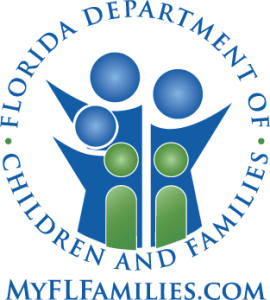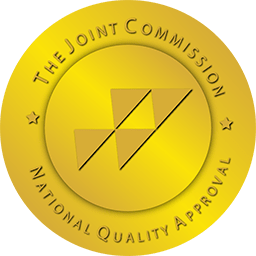Joints or nails refer to the hand-rolled cigarettes containing marijuana. Pipes or water pipes called bongs are also used to smoke marijuana. Cigars with the tobacco replaced by marijuana are called blunts. Blunts often include another drug mixed with the marijuana like crack cocaine.
Marijuana is also used to brew tea and can be cooked in foods.

Signs of Marijuana Abuse
- Rapid, loud talking and bursts of laughter in early stages of intoxication.
- Sleepy or stuporous in the later stages.
- Lack of concentration and coordination.
- Forgetfulness in conversation.
- Inflammation in whites of eyes (bloodshot).
- Odor similar to burnt rope on clothing or breath.
- Distorted sense of time passing, overestimating time intervals.
- Craving for sweets.
- Increased appetite.
- Use or possession of paraphernalia including roach clip, packs of rolling papers, pipes or bongs.
Short-Term Effects of Marijuana
Low doses can produce the following effects:
- Sense of well-being.
- Dreamy state of relaxation.
- Vivid senses of sight, smell, taste, hearing (although no scientific evidence indicates that marijuana improves hearing, eyesight, and skin sensitivity).
- Slightly altered thought formation and expression.
- Impaired coordination.
- Distorted time and space relationships.
- Accidents at work or home.
- Anxiety.
- Panic attacks.
Stronger doses of marijuana make the effects more pronounced:
- Shifting sensory imagery.
- Rapidly fluctuating emotions.
- Fragmentary thoughts with disturbed associations.
- Altered sense of self-identity.
- Impaired memory.
- Dulling of attention despite an illusion of heightened insight.
Acute toxic psychosis is a risk with high doses of marijuana. This includes distorted images, delusions, and hallucinations. Depersonalization or confusion over the user’s own personal identity can occur. What exactly causes these symptoms is still unknown, but they seem to occur mostly in cases where a high dose of cannabis is consumed in food or drink, rather than smoked.
Marijuana effects a user experiences can depend on several factors. Research on twins has shown that identical twins are more likely than non-identical twins to have similar marijuana effects. While other factors, like the user’s expectations and the environment, also have important effects, genetics seem to play a role in determining the effects experienced.
The Typical Marijuana Response
The heart starts beating faster (20-50 beats per minute faster), bronchial passages relax and enlarge, and blood vessels expand in the eyes so they look red, all within minutes after smoking marijuana. The heart will beat even faster when other drugs are taken with marijuana.
THC stimulates brain cells to release the chemical dopamine, the same as most abused drugs do. This causes the high feeling. During this time, the marijuana user experiences pleasant sensations and intense colors and sounds. Time may seem to pass slowly. Marijuana may make the mouth feel dry and the user often becomes very hungry and thirsty. Their hands may get cold and shake.
After the feeling of euphoria passes, marijuana users become sleepy or feel depressed. Sometimes feelings of anxiety, fear, distrust, or panic set in.
How Marijuana Affects the Brain
In the brain, THC attaches to sites called cannabinoid receptors on nerve cells in the brain. Cannabinoids are naturally occurring cannabis-like chemicals in the body. Because THC molecules are similar to the cannabinoids, the THC interacts with the cannabinoid receptors, influencing many of the same processes. The THC overstimulates the cannabinoid receptors, disrupting the natural cannabinoids’ control. This overstimulation produces the intoxication or high experienced by marijuana smokers. Over time, the THC may degrade some cannabinoid receptors, possibly producing permanent adverse effects and contributing to addiction and risk of withdrawal syndrome.
Many cannabinoid receptors exist in areas of the brain associated with movement, coordination, learning and memory, and higher cognitive functions such as judgment, and pleasure.
Parts of the brain particularly affected include:
- Cerebellum – Body movement coordination.
- Hippocampus – Learning and memory.
- Cerebral cortex, especially cingulate, frontal, and parietal regions – Higher cognitive functions.
- Nucleus accumbens – Reward.
- Putamen – Movement control.In the following brain regions, there are a moderate amount of cannabinoid receptors, so these areas are affected moderately:Hypothalamus – Body temperature regulation, salt and water balance, reproduction. Amygdala – Emotional response, fear.
- Spinal cord – Peripheral sensation, including pain.
- Brain stem – Sleep and arousal, temperature regulation, motor control.
- Central gray – Analgesia.
- Nucleus of the solitary tract – Visceral sensation, nausea and vomiting.
Marijuana and the Hippocampus
The hippocampus is the area of the brain that is crucial for learning, memory, and the integration of sensory experiences with emotions and motivations. The THC in marijuana changes how sensory information enters and is processed by the hippocampus, causing damage to short-term memory. THC suppresses neurons in the information processing system and the activity of the nerve fibers.
Research using laboratory rats supports this effect on the hippocampus. Those treated with THC had the same reduced short-term memory as those who had their nerve cells destroyed in their hippocampus.
Normally, as people get older, they lose neurons in the hippocampus. This makes it more and more difficult for them to remember things. Using marijuana repeatedly may speed up the loss of these neurons. A study that exposed rats to THC over time produced the same nerve cell loss of rats twice their age.
Effects of Marijuana on Physical Health
Extended use of marijuana increases risk to of suppression of the immune system, which may cause some adverse health effects. Marijuana may impair the immune system’s ability to fight off infectious diseases and cancer. In laboratory experiments that exposed animal and human cells to THC or other marijuana ingredients, inhibition of the normal disease-preventing reactions of many of the key types of immune cells occurred. In other studies, it was shown that mice exposed to THC or related substances were more likely than unexposed mice to develop bacterial infections and tumors.
As reported consistently by NIDA’s Community Epidemiology Work Group (CEWG), a network of researchers that tracks trends in the nature and patterns of drug use in major U.S. cities, marijuana is often combined with other drugs like crack cocaine, PCP, formaldehyde, and codeine cough syrup, sometimes without the user being aware of it. Therefore, the risks that come with marijuana use may be compounded by the risks of other drugs that are added to the THC.
The Drug Abuse Warning Network (DAWN), which monitors the health impact of drugs, estimated that marijuana was a contributing factor in more than 110,000 emergency department visits in the U.S. in 2001. Fifteen percent of the patients were between 12 and 17, and almost two-thirds male.

Effects of Marijuana on the Lungs
Even if someone smokes marijuana only every now and then, they can experience burning and stinging in their mouth and throat, sometimes with a heavy cough. Someone who smokes marijuana regularly may have many of the same respiratory problems as tobacco smokers but develop them faster:
- Daily cough and phlegm production.
- Chronic bronchitis.
- More frequent chest colds.
- Emphysema.
- Bronchial asthma.
- Heightened risk of lung infections.
- Greater tendency toward obstructed airways.
- Double or triple the risk of cancers.
Many marijuana users also smoke cigarettes, and the combination increases the health risk even more. The amount of tar and carbon monoxide absorbed by marijuana smokers is 3 – 5 times more than regular tobacco smokers, as they tend to inhale more deeply and hold the smoke in the lungs.
Marijuana use also makes it harder to quit smoking tobacco, especially for those who smoke marijuana daily.
Marijuana and Increased Risk of Cancer
Marijuana smoke can also promote cancer of the respiratory tract and lungs. A study comparing 173 cancer patients and 176 healthy individuals produced strong evidence that smoking marijuana increases the likelihood of developing cancer of the head or neck. The more marijuana smoked, the greater the likelihood. Statistical analysis of the data suggested that marijuana smoking doubled or tripled the risk of these cancers. Marijuana contains irritants and carcinogens, so it has the potential to promote cancer of the lungs and other parts of the respiratory tract. Marijuana smoke actually contains 50 – 70% more carcinogenic hydrocarbons than tobacco smoke. It also produces high levels of an enzyme that converts certain hydrocarbons into carcinogens, potentially producing malignant cells. Because of the manner in which marijuana is smoked, the risk of cancer may much higher than that of smoking tobacco.
Effects of Marijuana on Heart Rate and Blood Pressure
Marijuana and cocaine together can produce greater, longer-lasting cardiovascular effects than either drug alone. The result is severe increases in heart rate and blood pressure.
In a recent study, the heart rate increased 29 beats per minute with marijuana alone and 32 beats per minute with cocaine alone. When the drugs were given together, the heart rate increased by 49 beats per minute, and the increased rate persisted for a longer time. In the study, the subjects were sitting quietly – but if an individual were to do something physically stressful after taking both marijuana and cocaine, it may significantly increase risks of overload on the cardiovascular system.
Another study indicated that the risk of heart attack during the hour following smoking marijuana is 4 times the usual risk. This might occur partly because marijuana raises blood pressure and heart rate and reduces the oxygen-carrying capacity of blood.
Marijuana and Effects on Social Life
Marijuana Increases the Risk of Accidents
- Reaction time.
- Visual search frequency (driver checking side streets).
- Ability to perceive and/or respond to changes in the relative velocity of other vehicles.
How Marijuana Affects the Brain
One study compared scores on standardized tests of verbal and mathematical skills among grade 12 students who smoked marijuana and those who didn’t, against their scores in the 4th grade. Both groups of students scored equally well in grade 4. But marijuana smokers scored much lower than the non-smokers by the time they reached 12th grade.
Research on young people under college age using marijuana shows that they:
- Are more accepting of deviant behavior.
- Demonstrate lower achievement than non-users.
- Exhibit more delinquent behavior and aggression.
- Are more likely to rebel against authority.
- Experience a poor relationship with parents.
- Associate more with other delinquents and drug users.
College students who used marijuana heavily (almost every day) were compared to light users (once a month) in a study that looked at their skills related to attention, memory, and learning. Compared to the light users, heavy marijuana users made more errors and had more difficulty in the following:
- Sustaining attention
- Shifting attention according to environment
- Registering, processing, and using information.
The greater impairment among heavy users seems to be due to the alteration of brain activity produced by marijuana. It is important to note that these effects occurred even though they had not used marijuana within the last 24 hours. Therefore, daily marijuana smokers are likely to be functioning at a continually reduced intellectual capacity.
This adverse effect of marijuana on memory and learning can last for days or weeks even after the acute effects of the drug wear off. Even after a week of abstinence from marijuana, long-term heavy marijuana smokers exhibited impaired ability to recall words from a list. By 4 weeks, they seemed to have returned to normal, showing that some cognitive abilities can be repaired after quitting.
However, there is evidence that critical life skills can be destroyed by marijuana’s effects on the brain. By measuring students’ problem-solving and emotional skills in 8th grade and later in 12th grade, it was shown that those who smoked marijuana suffered from a reduced capacity for self-reinforcement. These psychological skills are necessary to maintain confidence and persevere in reaching goals.
Marijuana and Effects on Work
Employees who smoke marijuana are more likely to experience problems at work. Studies show an increase in the following indicators of poor performance among workers who use marijuana:
- Absences
- Tardiness
- Accidents
- Workers’ compensation claims
- Job turnover
A study among municipal workers found that employees who smoked marijuana on or off the job reported more withdrawal behaviors, including leaving work without permission, daydreaming, spending work time on personal matters, and shirking tasks. These behaviors adversely affect productivity and morale.
One study showed that people who smoke marijuana often but not tobacco have more health problems and miss more days of work than nonsmokers do. Many of the extra sick days taken by the marijuana smokers in the study were for respiratory problems.
Marijuana Use During Pregnancy
Marijuana use during pregnancy has produced babies that are smaller than those born to mothers who did not use marijuana. Smaller babies are more susceptible to health problems. These babies also display indications of problems with neurological development, including altered responses to visual stimuli, increased tremulousness, and a high-pitched cry.
When a mother passes THC on to her baby through her breast milk during the first month of breastfeeding, the baby’s development of control of muscle movement can be affected.
- More than other children at the same age, children who have been exposed to marijuana often experience problems in the following areas:
- Visual perception.
- Language comprehension.
- Sustained attention.
- Memory.
- Decision-making skills.
- Behavioral issues.
Addiction to Marijuana
Marijuana can produce the disease of addiction in long-term users. Addiction to marijuana is characterized by compulsive craving, causing the user to try to find and use more of the drug even when it may produce negative health and social consequences. Marijuana becomes an obsession. The user thinks about it all the time – where and when they can get more, how much is available and what quality it is, where will they get the money for more marijuana, etc.
The body starts to adapt to marijuana after it is used repeatedly. Tolerance develops, so more marijuana must be smoked to get the high that used to be felt after only a few hits or “tokes” on a marijuana cigarette.
At the point where addiction to marijuana is a problem, the associated memory and learning problems may be causing problems at work or even leading to loss of a job. The marijuana user often experiences more isolation from friends and family. When stress builds, the user turns to marijuana for relief, providing an excuse to smoke more of it. This results in increased marijuana use and worsening problems, in a cycle that is difficult to end.
The craving produced by addiction can make it difficult for long-term marijuana smokers to quit. When they do succeed in abstaining from smoking marijuana, they often experience withdrawal symptoms, which can include increased aggression around one week after quitting marijuana. Marijuana users trying to abstain will become irritable, anxious, and may not be able to sleep well.
Studies at McLean Hospital in Belmont, Massachusetts, and Columbia University in New York City show that after extended marijuana use is stopped, marijuana withdrawal symptoms set in:
- Irritability
- Stomach pain
- Aggression
- Anxiety
The sponsor of the research, NIDA, concluded that dependence on marijuana may be an important consequence of repeated daily exposure to marijuana.
Those around a marijuana user who had expressed the desire to quit at one time may hear excuses why now isn’t the right time to quit. Marijuana addicts cannot quit even if they want to.
Scope of Marijuana Use in the United States
Use of marijuana is prevalent among teenagers and young adults. According to the 2001 Monitoring the Future Study (an annual survey of drug use among middle and high school students), illicit drug use by 8th, 10th, and 12th graders is not growing. However, consider that:
- 20% of 8th grade students said they had tried marijuana and 9% had used it within the 30 days before the study.
- 40% of 10th graders said they had tried marijuana sometime in their lives, and almost 20% were current users.
- Among 12th graders, 50% had tried marijuana, and 22% were current users.
Marijuana for Medical Use
Medical uses for cannabinoids continue to be researched, including treatment using smoked marijuana and extracts of marijuana for appetite stimulation, certain types of pain, and spasticity from multiple sclerosis.
However, there are several problems that prevent the widespread use of marijuana as a medical therapy. For example, doses of marijuana contain inconsistent THC levels hindering the effectiveness of clinical trials. As well, the dangerous effects on the respiratory system actually cause harm to he patient, even if some effects are helpful.
Marijuana also contains many chemicals besides THC. Little is known about these chemicals and their potential to cause damage to medical patients.
Treatments for Marijuana Abusers
One study of marijuana treatment was conducted on a group consisting mainly of men in their early 30’s who had smoked marijuana for more than 10 years. Two treatments were found to produce benefits that were comparable – cognitive-behavioral group treatment (14 sessions) and individual treatment for 2 sessions that included motivational interviewing and advice on how to reduce marijuana use.
Both of these marijuana treatments helped patients learn about triggers that would lead them to use marijuana. When the patients were contacted 3 months later, about 30% of users had remained abstinent. During the following year, marijuana use, symptoms of dependence, and psychosocial problems were found to have decreased.
Another study suggests potential in a reward system that gives patients vouchers for abstaining from marijuana. These vouchers can be redeemed for positive lifestyle items such as movie passes, sports equipment, or vocational training.
There are no medications available to treat marijuana abuse. However, there is a possibility of developing a medication that will block THC’s intoxicating effects, preventing relapse by reducing or eliminating the appeal of marijuana.
Drug Treatment for Marijuana
Our professional drug treatment center staff is experienced in helping youth and people of all ages recover from drug and alcohol abuse. We provide a compassionate, supportive environment in our North Miami Beach, Florida, drug treatment center.
Admissions can be accepted 7 days a week. Trained addiction professionals conduct individual assessments that address each individual’s treatment needs. You’ll find our marijuana drug treatment programs offer access to a continuum of care that provides the intensity of therapy appropriate throughout each stage of recovery, from extended residential care to lifetime aftercare services. The individual program incorporates leading forms of therapy that have proven effective in addressing underlying causes of marijuana use, dual diagnosis, and issues with family, employers, school and the legal system.
We work with patients individually as well as in group sessions and a Family Program upon completion of any necessary marijuana detoxification. Emphasis on recovery from marijuana addiction and maintained sobriety helps prepare the patient for gradual re-entry into society.
Marijuana treatment does not need to be voluntary. Often, a family member, employer, or the court system can be the motivating factor for an individual receiving drug treatment for marijuana.
If you or a loved one needs help dealing with addiction to or abuse of marijuana, please contact us right away. We’re here to help. Call us at 1 800-626-1980 or request more information.







